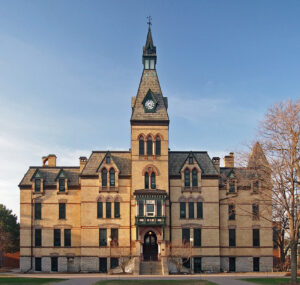
Hamline University, in St. Paul, Minnesota, has made headlines this month after firing a former art history professor, Erika Lopez Prater, over issues of academic and religious freedom. Prater was fired after students complained following her showing a 14th-century painting of Islam’s Prophet Muhammad to her class — a taboo in the Islamic faith. Despite Hamline agreeing with students and letting go of Prater, many are outraged as she gave ample warning that the image would be shown and do not believe that she was acting malicious or in a prejudiced manner. Depending on how one views the controversy, the firing of Prater can be seen as positive or negative; the topic, however, has brought to light a debate over the role of academic and religious freedom and how they fit into higher education.
Those in support of Prater have cited that the showing of the prophet’s image was not done without warning. In her syllabus, she explained that religious images would be shown throughout the course “including the Prophet Muhammad and the Buddha” and that students should contact her if they wanted to talk more about the subject. On the class day in question, Prater also gave another warning that the image would be shown for a few minutes and anyone who wished to step outside could. In both instances, no one spoke out, and on that day, no one left the classroom. Only after the fact did a student complain which resulted in Prater being dismissed from the campus, a violation of academic freedom.
Higher education institutions are often a place where students are taught heavier subjects that’ll make them think more profoundly and look at the world through a different lens. It is not uncommon for students to discuss uncomfortable topics, and many professors do give a warning prior to or on the day when the lesson is being taught. Even though it is not necessary for them to do so. In this case, warning was given and Prater knew the gravity of the image trying to be sensitive of the situation and of students’ religious backgrounds. Those trying to label the professor as islamophobic are wrong and should look at the evidence surrounding the event.
Additionally, not all college classes taught can be tailored to fit the specific religious needs of the students taking the course. If this were the reality, academic and religious freedoms would be encroached upon with the classes being divided and classified by someone’s moral and religious attitudes. College campuses are a place to spread ideas and learn other perspectives, not suppress what knowledge is taught.
While showing the Prophet Muhamad’s photo is prohibited in Islamic religion, Muslims and Muslim groups are torn on the issue of whether Prater is truly at fault. The experience of the student who complained and those who are outraged should not be dismissed, but one needs to look at the whole situation to understand the intentions of Prater, which were purely academic.
The Muslim Public Affairs Council, released a statement in favor of Prater stating that “the painting was not Islamophobic,” and that it was “commissioned by a fourteenth-century Muslim king in order to honor the Prophet, depicting the first Quranic revelation from the angel Gabriel.” The council continued their statement explaining that the inability to view images of the prophet is a narrow and extreme interpretation of the religion. The Council on American-Islamic Relations also leaned in favor of Prater, claiming that professors “have the duty to exercise wisdom in determining when, whether and how to address sensitive and disputed subjects, such as visual depictions of the Prophet.”
Following the outrage, Hamline University has released their own statement expressing that they are reconsidering their stance on the issue and on academic freedom. They have also voiced that Prater was not fired over this incident and was allowed to finish teaching her course until it was completed. After her class finished, the university agreed not to offer her course again.
Regardless of what stance one may have regarding the image of the Prophet Muhammad, in this case, Prater is not at fault and should not have been terminated or receive the backlash that she did. Prater was sensitive to those in the Islamic religion and is being largely supported by those in and outside of it. The issue of academic and religious freedom should not be limited to this event where Prater was acting with both in mind. Allowing these freedoms to be skewed and weaponized in this manner will only divide and censor higher education campuses.







